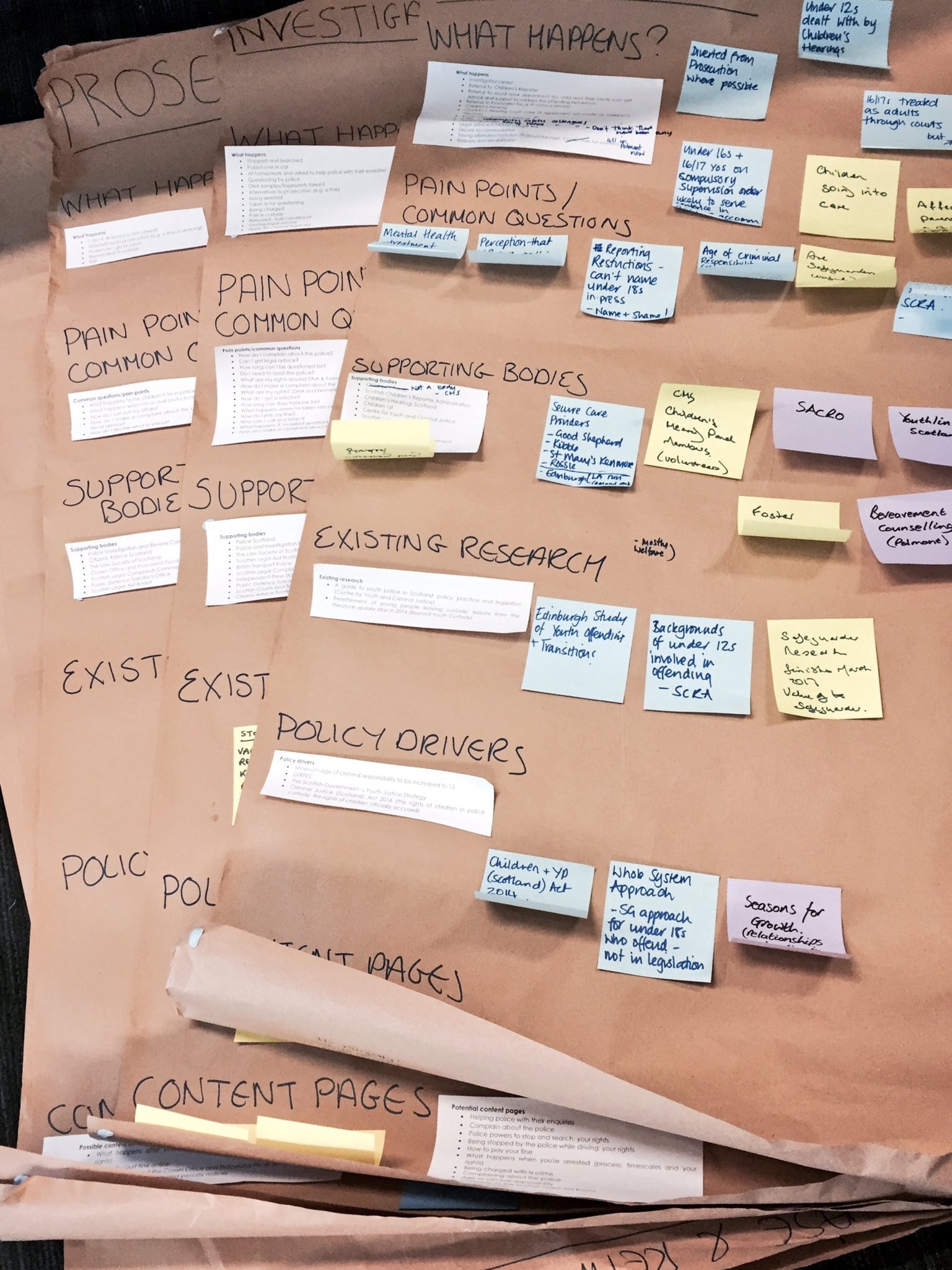Digital
Designing justice content: subject matter experts’ views
April 25, 2017 by dawnkofie No Comments | Category Digital Public Services, Digital Scotland, mygov.scot
We know that effective engagement with subject matter experts plays a huge part in creating content that works. It helps users quickly find easy-to-understand and accurate information, without having to know the ins and outs of Scotland’s public service landscape.
Subject matter experts are hugely important to the content design process. Combining user-focussed design with an expert’s technical knowledge about a service or services will ultimately provide better access for users – leading to better outcomes.
But what does it feel like to be the subject matter expert in this process? We spoke to some of our policy colleagues in the Scottish Government to find out.
Catherine Lobban from the Police Division and Alison Melville from the Care & Justice team in the Scottish Government are just 2 of the many stakeholders (along with Police Scotland, the Crown Office and Procurator Fiscal Service and the Scottish Legal Aid Board), we’ve been working with to produce new mygov.scot content on the topic of ‘breaking the law’. This includes complaining about the police, knowing your rights if you’re arrested and what happens if a young person gets in trouble with the police.
This was Catherine and Alison’s first time working on a mygov.scot content project. We asked them to share their experience.
Was it clear why and how you were going to be involved in the breaking the law content project?
CL: Absolutely clear. The content designers held an early workshop involving key policy leads. The aim of this workshop was to learn more about the project’s background and to discuss individual requirements. It was clear from the outset what was needed in terms of supporting the content designers and contributing to the project.
AM: Yes, my team leader and I were sent information setting out the background to the project. We were then invited to meet with the content designers who explained it in more detail.
Did the information you were given about what was happening and why make sense?
CL: Yes. We were sent a brief beforehand explaining how the work contributed directly to Objective 1 of The Digital Strategy for Justice in Scotland – “to allow people and businesses to access the right information at the right time” – and how the information we would produce would be of benefit and relevance to the people of Scotland.
AM: It did. I had used some of the other mygov.scot pages before and found them to be really user-friendly and helpful.
What did you think of the workshops that you took part in?
CL: It proved an excellent foundation for the work required to be taken forward. It was an opportunity to meet other policy leads and to discuss the aims and objectives of the breaking the law project, and what was required to bring the project to a successful outcome. Through discussion, it was clear how much the work I do in the Police Powers Team cuts across other Scottish Government policy areas.
AM: I thought the workshop was really helpful. A lot of the content we put on the Scottish Government website is aimed more at practitioners, so it was good to take time out to think about the type of questions parents or young people might have.
How do you feel about information about your policy area being rewritten in plain English?
CL: This is absolutely vital so that the content pages are fully accessible to all.
AM: I think it’s great. I’ve always tried to use plain English, but often find myself using jargon or acronyms that are widely used in the youth justice sector.
Has being involved in the content creation for breaking the law had an impact on your workload?
CL: Not too great an impact as the content designers were appreciative of conflicting demands and time pressures and, as such, did not give unrealistic deadlines.
I am very fortunate in that I work beside a police officer secondee who took time to provide both the content designers and me with advice and invaluable support.
We met the content designers regularly to talk through, agree and fact check the content pages. We also acknowledge the contribution made by Police Scotland who took the time to give final approval to the content.
AM: It hasn’t been too time-consuming. I met with the content designers and we had a chat about how children and young people are dealt with by the youth and adult justice systems. They’ve done the hard work, pulling together the text, and I’ve just had to check it as it’s developed. I’m learning a fair bit about my policy area too as I often have to ask colleagues’ advice.
Do you see any benefits of this work?
CL: Yes. The work has broadened my knowledge of police powers and the criminal justice system more generally. I would encourage anyone who is asked to participate in such a project to grasp the opportunity.
AM: The main benefit will obviously be for the user, who will hopefully be able to access the information they need more easily. Being part of the process has helped me to think a bit more about who my users are when I start a new piece of work, and what they are looking for from it.
Tags: content, content design, Justice and Safety, Life events, mygov.scot


Leave a comment